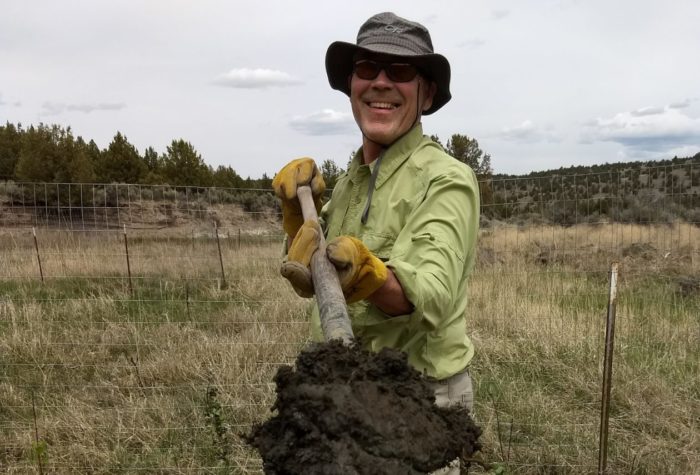Oregon’s Only Saline Lake
With the iconic Abert Rim towering above, Lake Abert is a terminal lake with no outlet to the ocean. All water that flows in from the Chewaucan River — its primary source — is held within the lake. As water in the lake evaporates, the water becomes saltier.
When it is healthy, Lake Abert can support more than 50,000 thousand birds a day, and it ranks right next to the Great Salt Lake among saline lakes in its importance to migratory shorebirds.
Approximately one-third of Oregon’s population of snowy plover breed at Lake Abert. One-fifth of the global population of Wilson’s phalarope stop at the lake to replenish food stores on their passage to the equator.
When they land in Lake Abert, it’s not fish that these birds and others are coming for, but particular types of shrimp and flies that thrive in these hypersaline conditions. The huge numbers of these two species – brine shrimp and alkali flies – provide critical sustenance to hundreds of thousands of shorebirds, waterbirds and waterfowl on their journey along the Pacific Flyway, as well as during the breeding season. Imagine you’re traveling by your own muscle power between Alaska and South America. You’d want to know that you have food and water you can count on.
The thing is, Lake Abert can only feed hundreds of thousands of birds when its water levels are just right. When there is too little freshwater, salinity increases to the point where the brine shrimp and alkali flies cannot survive, thus eliminating this important food source for migratory birds.
Running Dry
Lake Abert definitely can’t feed birds when it is dry. Lake Abert ran dry in 2014 for the first time since the 1930s after four consecutive years of progressively lower water levels. No brine shrimp or alkali flies hatched that year due to the increased salinity and migrating birds had to find food elsewhere. In 2021, lake levels plummeted again, resulting in the lowest number of birds ever recorded at the lake.
Numerous researchers (cited below) have studied and documented the causes for these declines: over-appropriation of water rights, the construction of the River’s End reservoir, and climate change-driven alterations in precipitation.
The Oregonian’s reporting detailed how the Oregon Department of Environmental Quality shut down efforts in 2015 to better understand the water needs of the lake and how state-sanctioned projects were harming the lake.
While ONDA and many other conservation organizations have been urging managers and regulators to protect and restore Lake Abert for decades, the drying of the lake in 2021, the new information brought to light by The Oregonian and historic low bird counts all highlight the urgent need for action now to ensure a more vital future for this unique, important and fragile eastern Oregon ecosystem.
What You Can Do
1. Stay Informed
Subscribe to ONDA’s e-newsletter
2. Drop Us a Line
We have been grateful to hear your concerns about Lake Abert and for the many offers of assistance we’ve received from experts, advocates, Lake Abert aficionados, Oregonians and people from across the country to save the lake. We appreciate hearing from you! Please keep those messages coming to anne@onda.org.
3. Share This Page
Let your fellow birders and concerned friends know what’s happening at Lake Abert.
Sources
